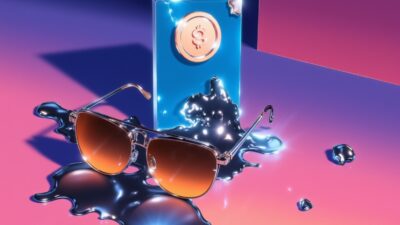Introduction: Haute Couture Goes Hyperdigital
Metaverse Fashion Week 2025 wasn’t just about pixels — it was about presence.
From AI-designed couture to blockchain-backed exclusives, the fifth edition of the virtual fashion spectacle proved that digital style is more than just a flex — it’s a full-blown culture shift. Hosted across Decentraland, Spatial, and Futureverse World, the event brought legacy brands, indie designers, and virtual influencers into one surreal, high-glam ecosystem.
Here’s a look at what stole the show, what fell flat, and why your next favorite fashion drop might only exist in the cloud.
1. Gucci’s Glitchcore Glamour
Gucci made a statement with their Glitchcore Collection — a collaboration with AI fashion house NeuroThreads.
- Garments glitched in real time based on avatar movement
- NFT ownership unlocked alternate skin variations
- A viral runway moment featured avatars phasing in and out of the metaverse to a remix of Bladee
It wasn’t just fashion. It was interactive artwear.
2. Adidas x RTFKT: Sneakerverse 2.0
Adidas and RTFKT came through with a co-branded experience called Sneakerverse:
- AR filters that let users try on metaverse kicks IRL via mobile
- NFT airdrops for attendees who completed mini-games in Decentraland
- Physical sneakers that shipped only if you held the twin digital asset
The hype loop was real — the drop sold out (virtually) in under an hour.
3. The Rise of Indie Designers in Futureverse World
Futureverse hosted an alt-runway showcase called “Low-Poly Luxe”:
- Community-voted collections from creators in Nigeria, Japan, and Brazil
- Avatars walked AI-generated catwalks synced to on-chain music
- Winning designs will be turned into physical samples by Futureverse Labs
This was metaverse fashion with soul — and with global reach.
4. Digital Twins and AI Stylists: Welcome to the New Front Row
AI-generated influencers like Luna.EXE and SatoshiChic co-hosted panels and streams. Attendees could:
- Create a real-time AI twin to attend events on their behalf
- Use GPT-stylists to auto-generate outfit combos based on NFT wardrobes
Even celebrities joined via avatar — Paris Hilton’s hologram twinned with her AI bot to debut a cyberpunk line.
5. Wear-to-Earn Is the New Flex
Several collections came with wear-to-earn mechanics:
- Rock a designer item in virtual worlds to earn tokenized rewards
- Unlock gated spaces, exclusive tracks, and avatar upgrades
- One jacket by DEADFACE even emitted digital scent data (yes, that’s a thing now)
Flexing has become functional.
6. Critiques: Lag, Exclusivity, and Metaverse Fatigue
Not everything was perfect:
- Spatial struggled with lag during high-attendance shows
- Some events were token-gated to whale wallets only
- Critics say the novelty is wearing thin without tangible IRL crossover
Still, the vision is clear: fashion is no longer bound by physics — or gatekeepers.
Conclusion: Runway Reloaded
Metaverse Fashion Week 2025 wasn’t just a trend report — it was a live, evolving glimpse into the future of identity and self-expression.
In a world where avatars are brand extensions, and NFTs are couture, digital fashion isn’t optional anymore — it’s cultural currency.
See you on the next virtual runway.
Avatars on the Virtual Runway: Highlights from Metaverse Fashion Week 2025
The content, Avatars on the Virtual Runway: Highlights from Metaverse Fashion Week 2025, published on Mugen:City is for informational and entertainment purposes only.
We do not offer financial advice, investment recommendations, or trading strategies.
Cryptocurrencies, NFTs, and related assets are highly volatile and risky — always DYOR (do your own research) and consult with a professional advisor before making any financial decisions.
Mugen:City, its writers, and affiliates are not responsible for any losses, damages, or financial consequences resulting from your actions.
You are fully responsible for your own moves in the degen world. Stay sharp, stay rebellious.




